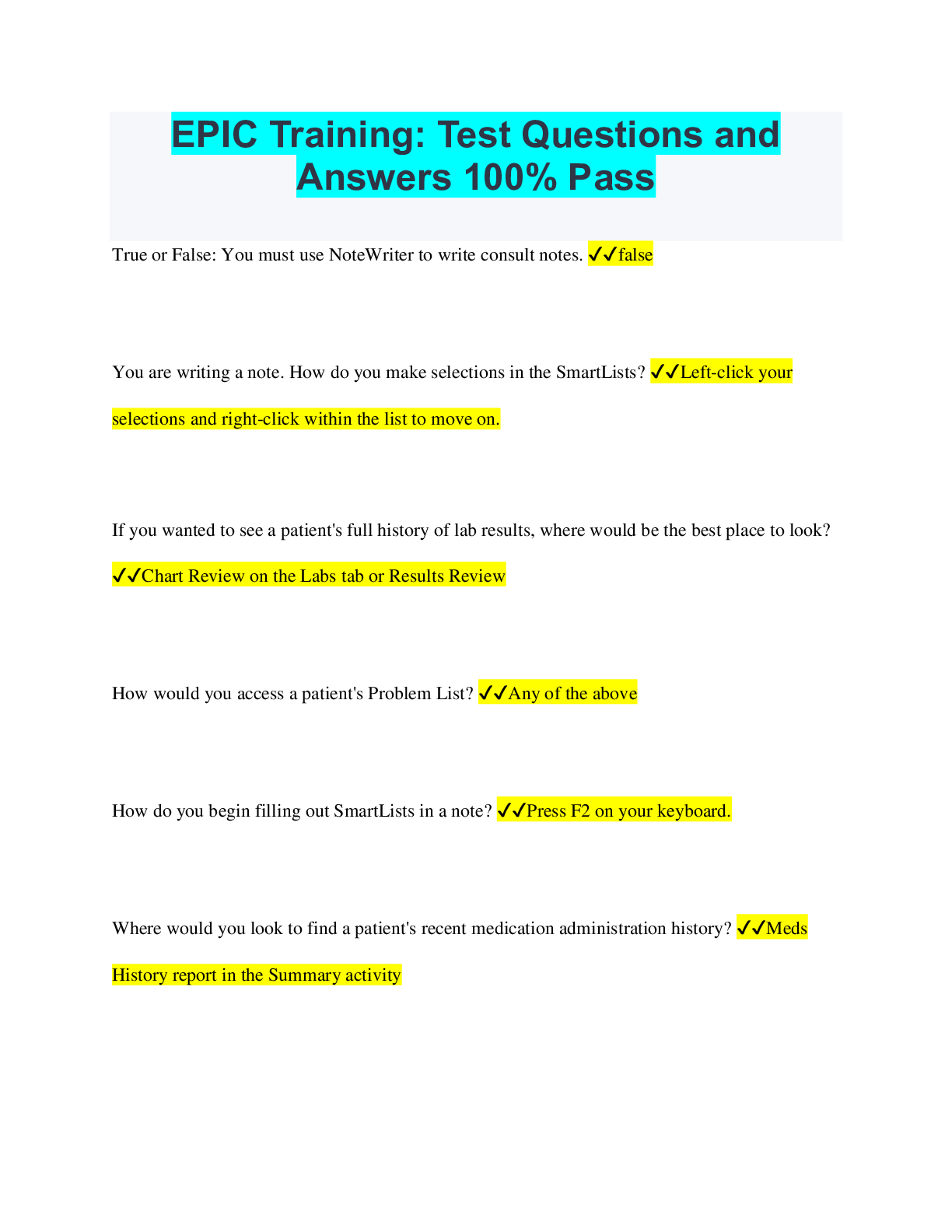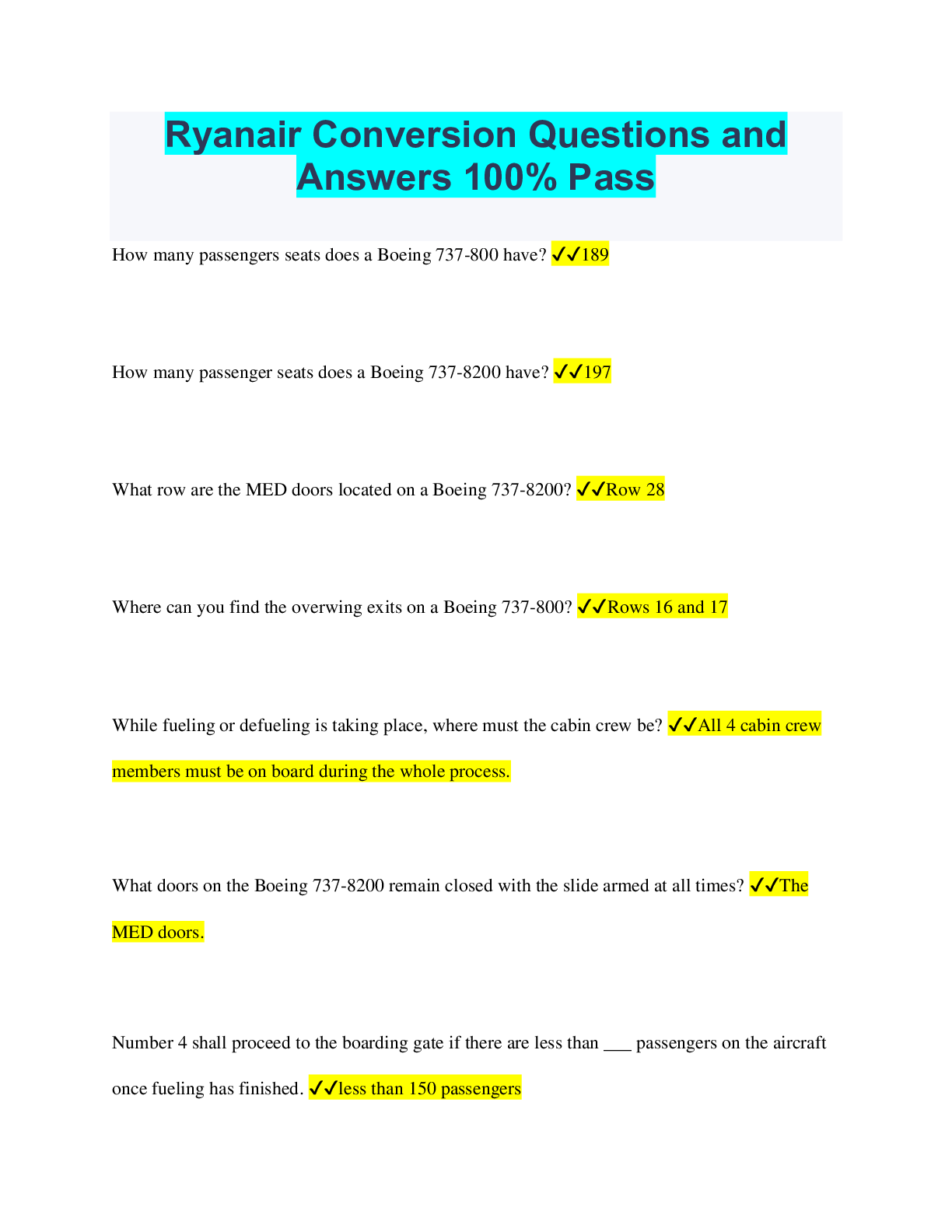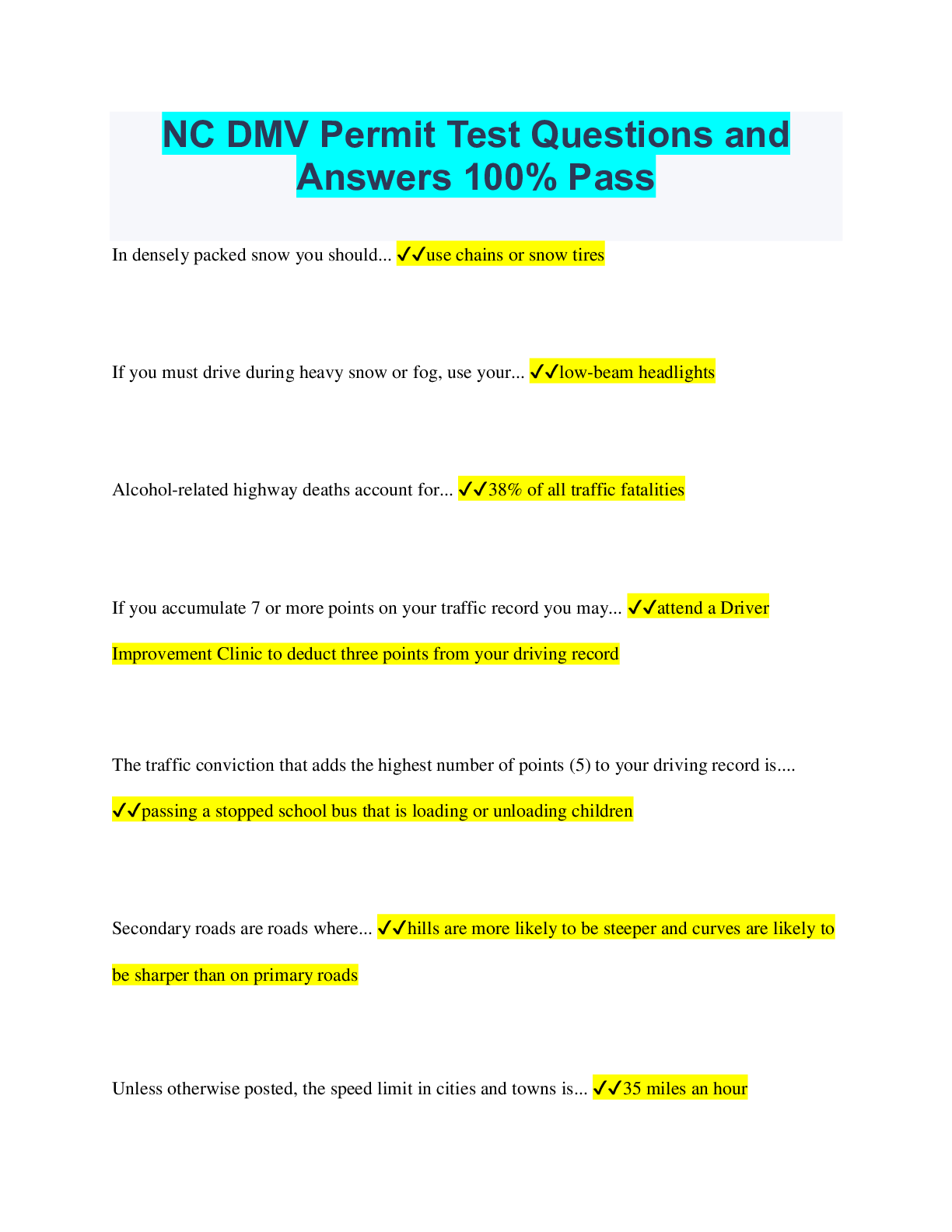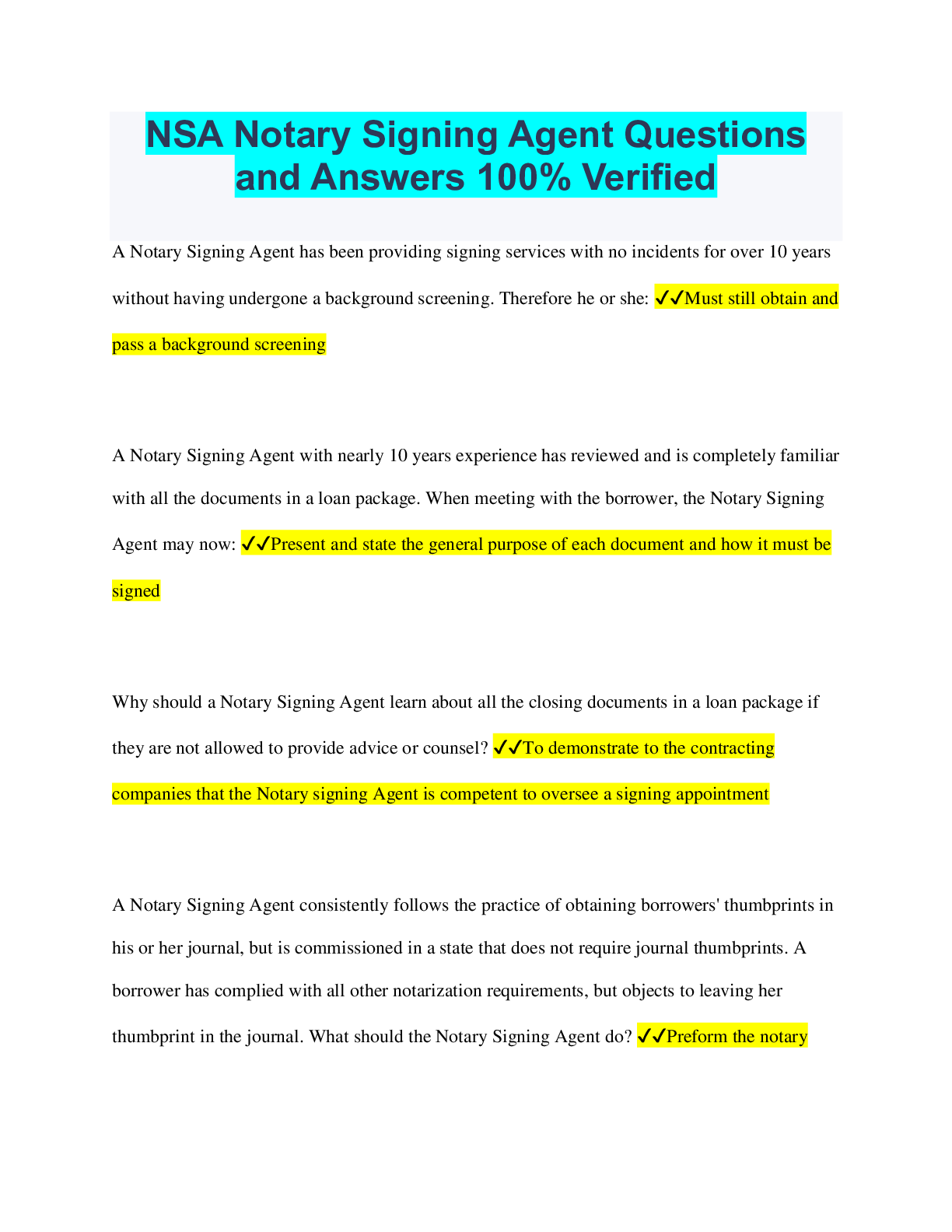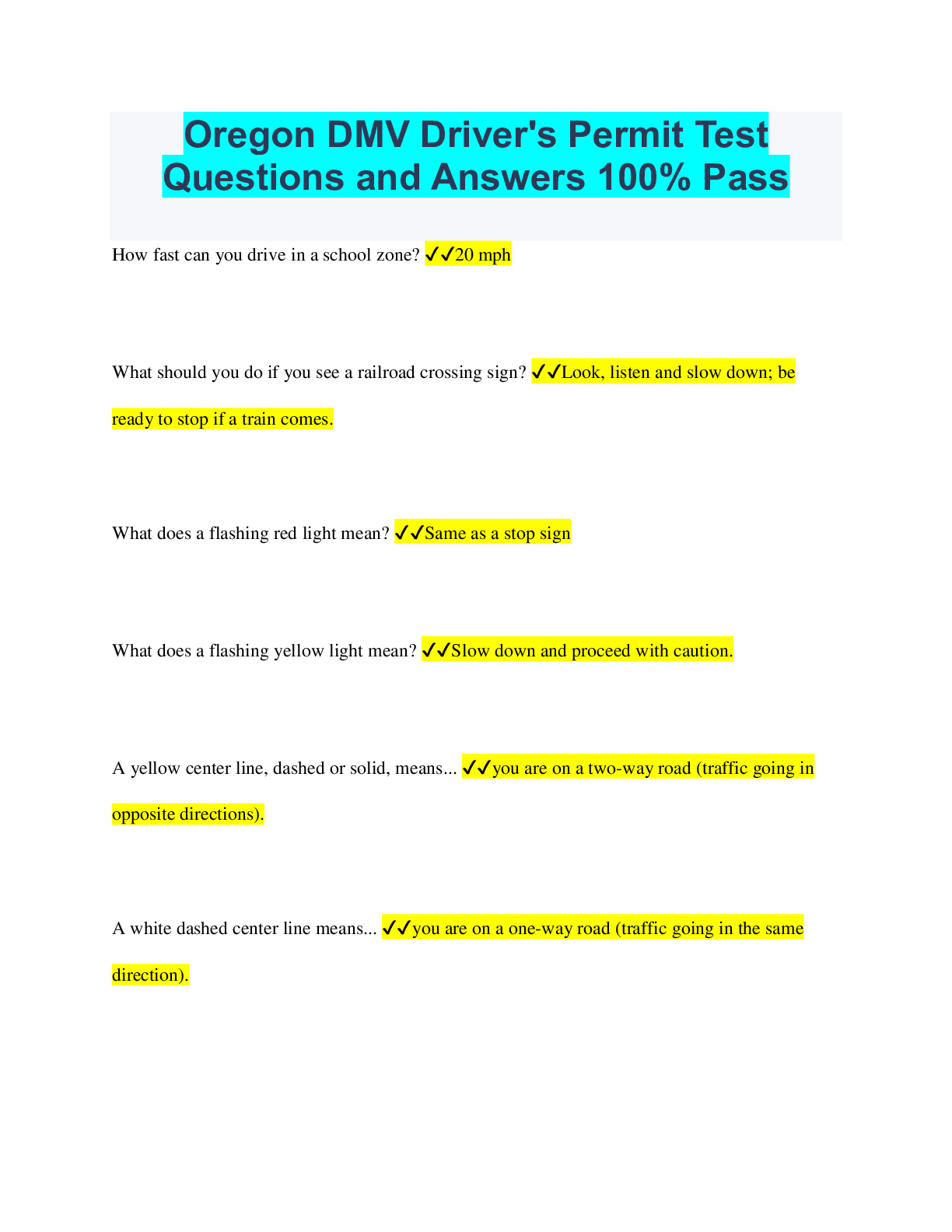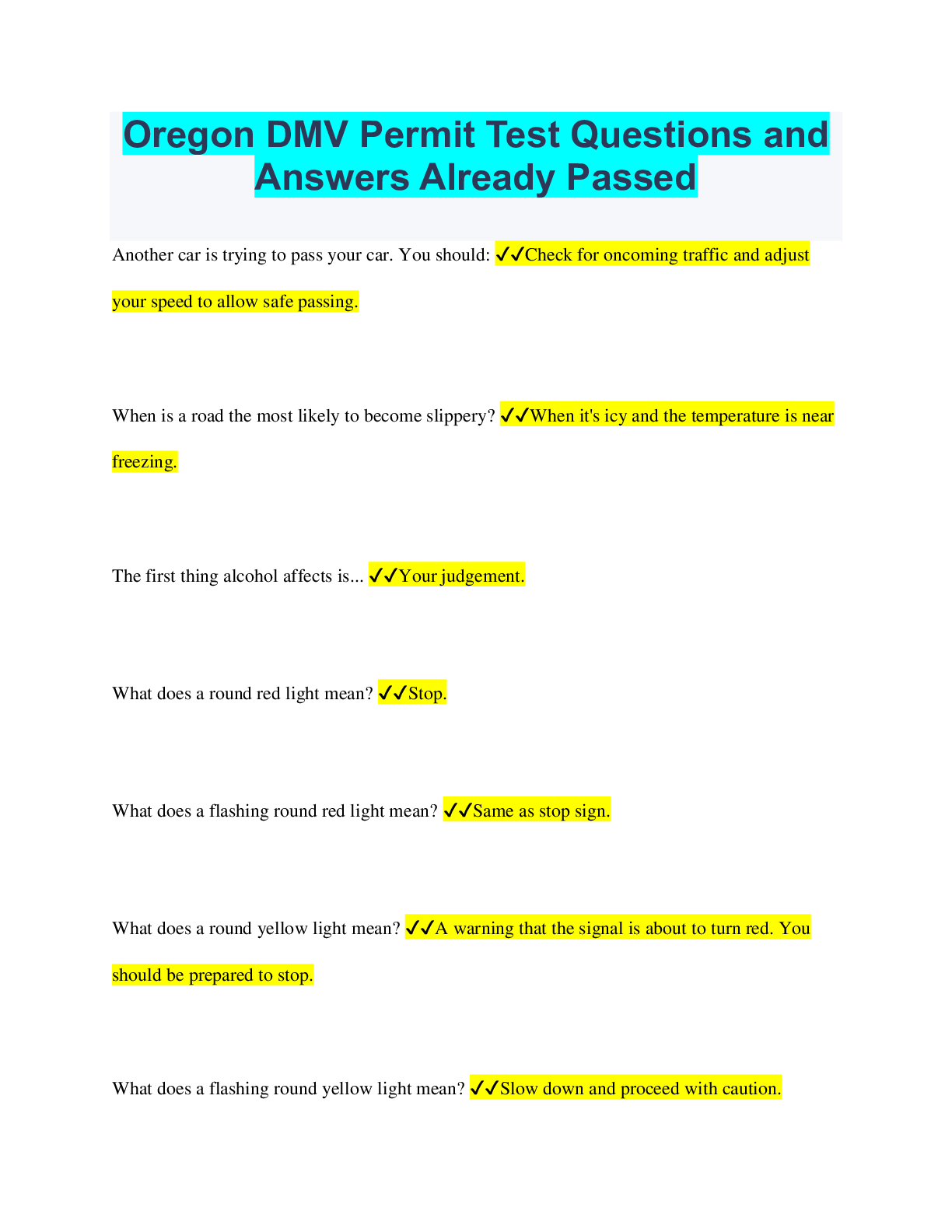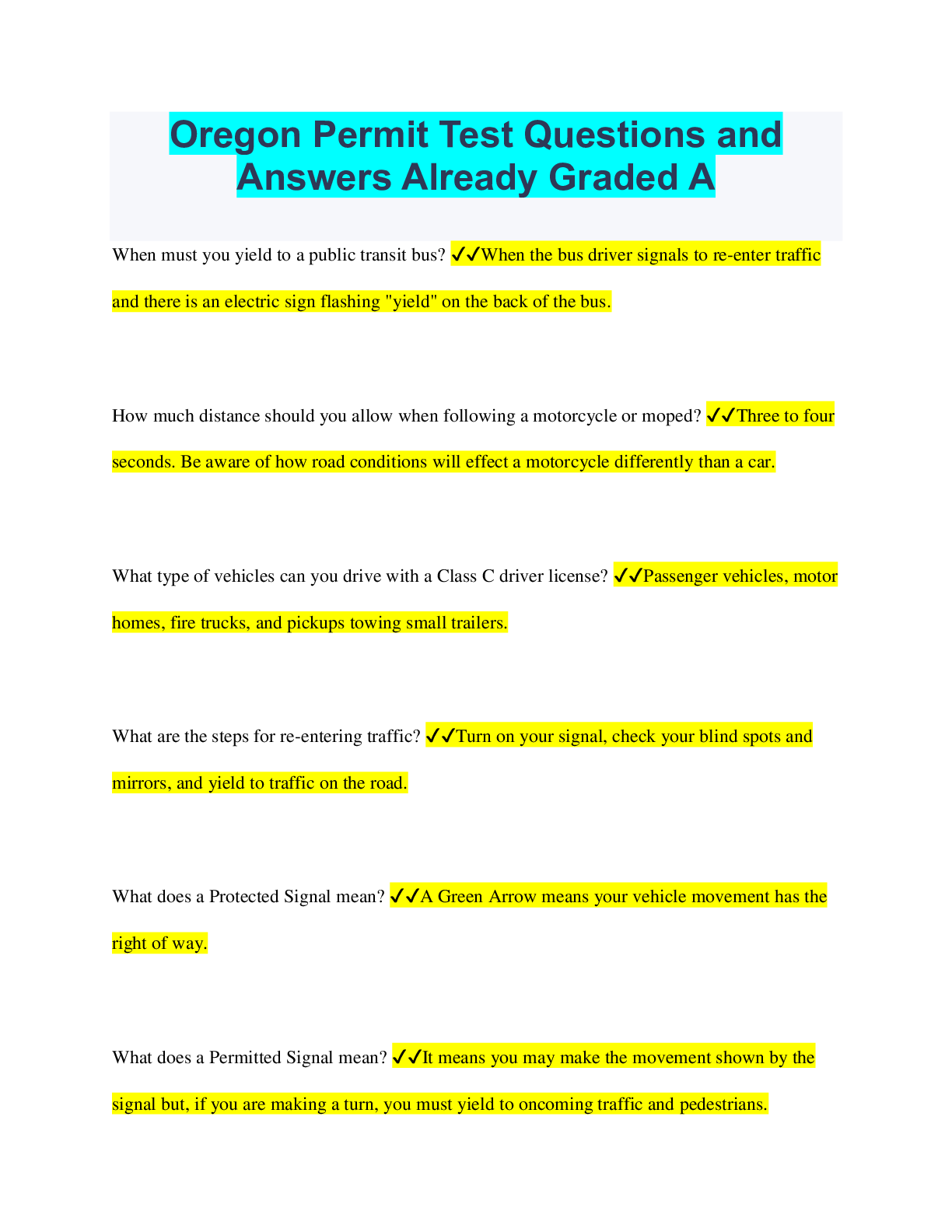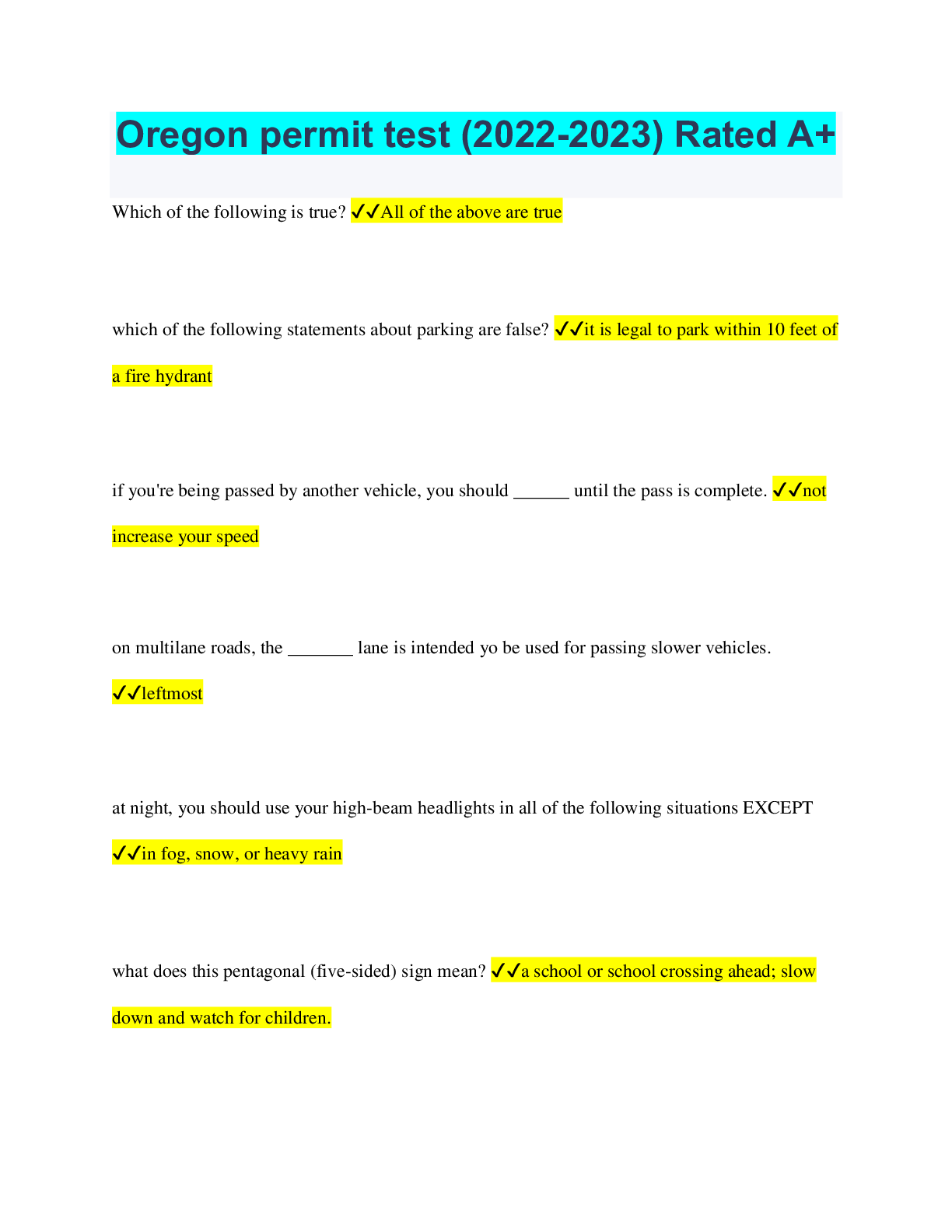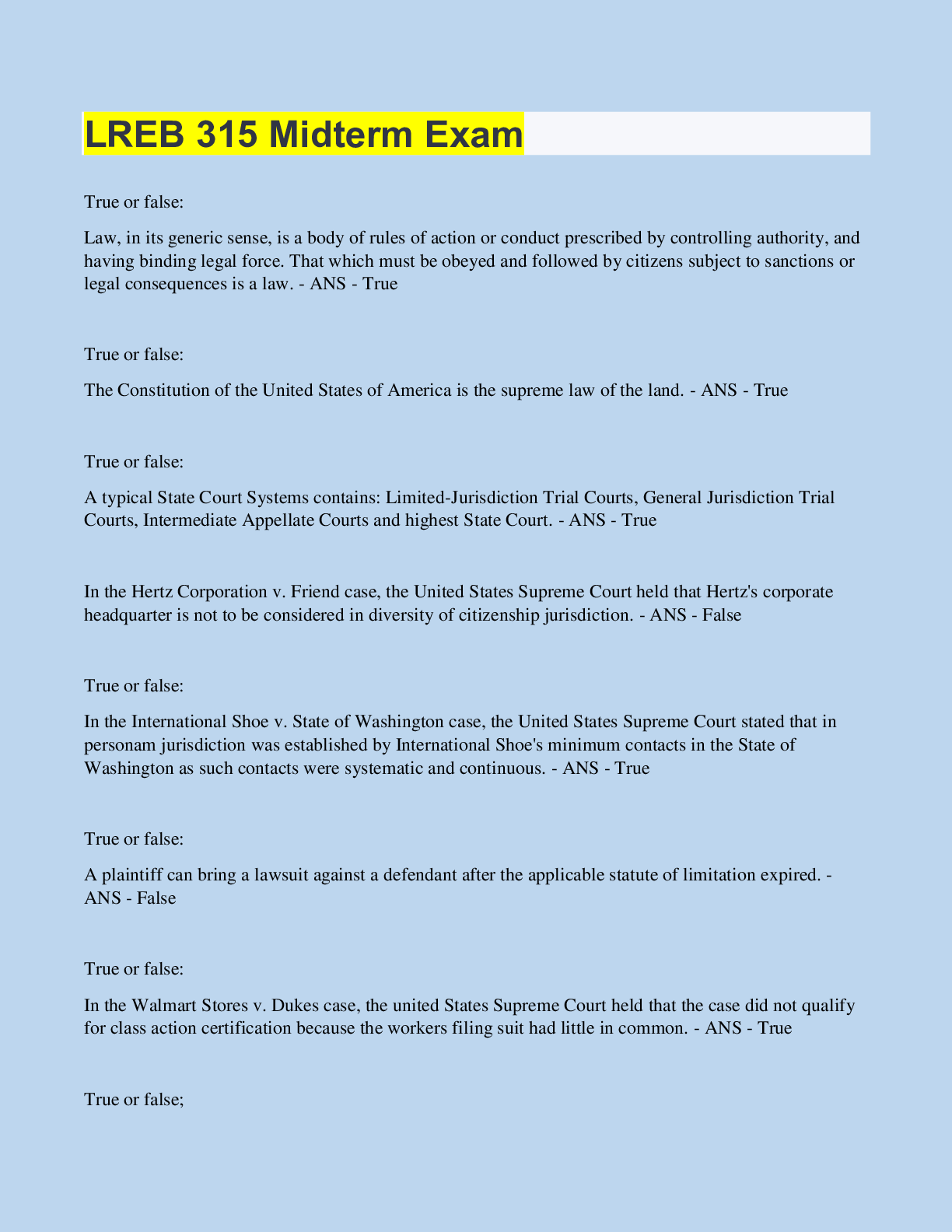Health Care > QUESTIONS & ANSWERS > AAOS EMT Eleventh Edition Chapter 14 Medical Overview (All)
AAOS EMT Eleventh Edition Chapter 14 Medical Overview
Document Content and Description Below
AAOS EMT Eleventh Edition Chapter 14 Medical Overview Assessment of the medical patient is usually focused on the _________. - ✔✔nature of illness Most treatments provided in the prehospital s... etting are intended to _________. - ✔✔address the patient's symptoms Most patients with an infectious disease will have _________. - ✔✔a fever Which of the following is bacterium resistant to most antibiotics and causes skin abscesses? - ✔✔MRSA Which of the following conditions is NOT categorized as a psychiatric condition? - ✔✔Substance abuse You and your EMT partner arrive at the residence of a 50-year-old man who complains of weakness. Your primary assessment reveals that he is critically ill and will require aggressive treatment. The closest hospital is 25 miles away. You should: - ✔✔manage all threats to airway, breathing, and circulation and consider requesting an ALS unit. When forming your general impression of a patient with a medical complaint, it is important to remember that: - ✔✔the conditions of many medical patients may not appear serious at first. When assessing a patient with a medical complaint, which of the following would MOST likely reveal the cause of the problem? - ✔✔Medical history / It is especially important to assess pulse, sensation, and movement in all extremities as well as pupillary reactions in patients with a suspected ___________ problem. // neurologic When caring for a patient with an altered mental status and signs of circulatory compromise, you should: - ✔✔limit your time at the scene to 10 minutes or less, if possible. The determination of whether a medical patient is a high-priority or low-priority transport is typically made: - ✔✔after the primary assessment has been completed. In which of the following situations would it be MOST appropriate to utilize an air medical transportation service? - ✔✔61-year-old man with signs and symptoms of a stroke and a ground transport time of 50 minutes After sizing up the scene of a patient with a possible infectious disease, your next priority should be to: - ✔✔take standard precautions. An infectious disease is MOST accurately defined as: - ✔✔a medical condition caused by the growth and spread of small, harmful organisms within the body. Which of the following patients is at greatest risk for complications caused by the influenza virus? - ✔✔68-year-old woman with type 2 diabetes The BEST way to prevent infection from whooping cough is to: - ✔✔get vaccinated against diphtheria, tetanus, and pertussis. 40. Ten days after treating a 34-year-old patient with tuberculosis, you are given a tuberculin skin test, which yields a positive result. This MOST likely indicates that: - ✔✔you were exposed to another infected person prior to treating the 34-year-old patient. Hepatitis B is more virulent than hepatitis C, which means that it: - ✔✔has a greater ability to produce disease. You are attending to a 27-year-old male driver of a car. According to his passenger, the patient had been acting strangely while driving, then slumped forward against the steering wheel, apparently unconscious. The car drove off the road and struck a telephone pole. The patient remains unconscious, and physical assessment reveals only a large hematoma on his right forehead with no other physical signs. Your patient is a diabetic who had been under a lot of stress lately and may have missed meals. This is an example of a: - ✔✔combination of a medical and trauma emergency. In 2009, the H1N1 virus accounted for over 200,000 deaths worldwide in the form of the swine flu. In 1919, a similar outbreak of the H1N1 occurred in the form of the Spanish flu. Starting in Kansas City, the virus spread rapidly worldwide, claiming up to 50 million lives. These are both examples of: - ✔✔pandemics. Your primary assessment of an elderly woman reveals that she is conscious and alert, but is experiencing difficulty breathing. She has a history of emphysema, hypertension, and congestive heart failure. As you assess the patient's circulatory status, you should direct your partner to: - ✔✔administer oxygen with the appropriate device. In addition to looking for severe bleeding, assessment of circulation in the conscious patient should involve: - ✔✔checking the radial pulse and noting the color, temperature, and condition of the skin. / When caring for a patient who takes numerous medications, it is best to: // take all of the patient's medications with you to the hospital and document them on your patient care report. The secondary assessment of a medical patient: - ✔✔is not practical if the patient is critically ill or your transport time is short. When performing a secondary assessment on a conscious patient with nontraumatic abdominal pain and stable vital signs, you should: - ✔✔focus on his or her chief complaint. Which of the following assessment findings is MOST indicative of a cardiovascular problem? - ✔✔Jugular venous distention Assessment of a patient's blood pressure with an automatic BP cuff reveals that it is 204/120 mm Hg. The patient is conscious and alert and denies any symptoms. The EMT should: - ✔✔obtain a manual blood pressure. End-tidal carbon dioxide (ETCO2) monitoring is clearly indicated for patients who present with: - ✔✔respiratory distress. Reassessment of a patient with a medical complaint should begin by: - ✔✔repeating the primary assessment. Which of the following medications would the EMT be LEAST likely to administer to a patient with a medical complaint? - ✔✔Ibuprofen Patients with tuberculosis pose the greatest risk for transmitting the disease when they: - ✔✔cough. In contrast to viral hepatitis, toxin-induced hepatitis: - ✔✔is not a communicable disease. Which of the following statements r [Show More]
Last updated: 2 years ago
Preview 1 out of 3 pages

Buy this document to get the full access instantly
Instant Download Access after purchase
Buy NowInstant download
We Accept:

Reviews( 0 )
$7.00
Can't find what you want? Try our AI powered Search
Document information
Connected school, study & course
About the document
Uploaded On
Aug 28, 2022
Number of pages
3
Written in
Additional information
This document has been written for:
Uploaded
Aug 28, 2022
Downloads
0
Views
84

.png)


